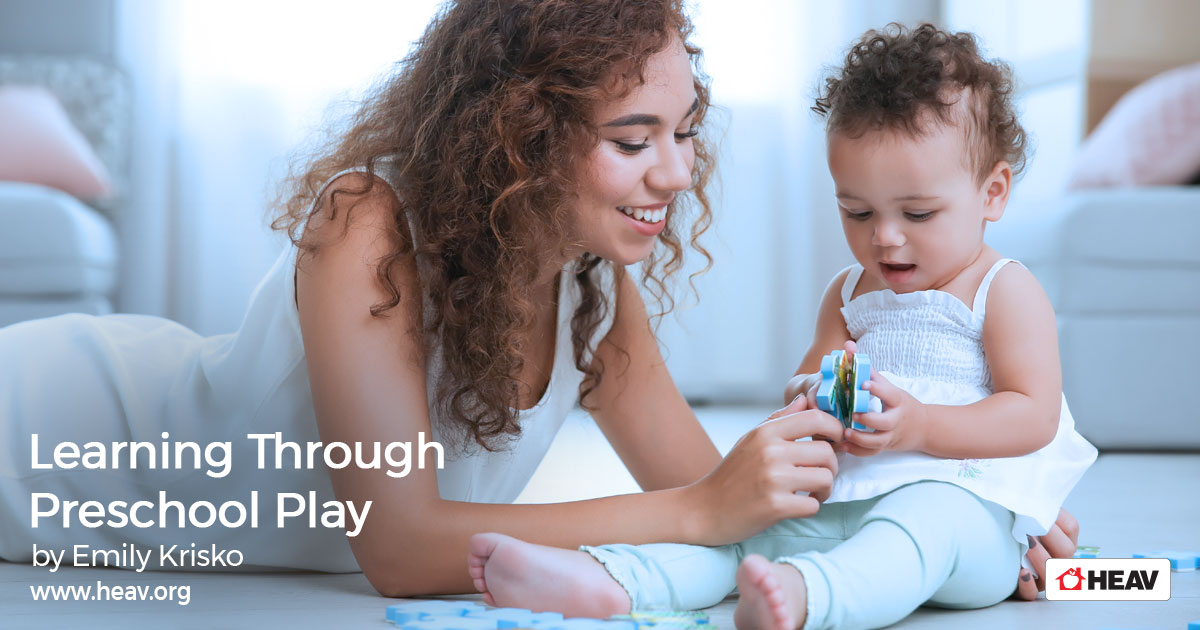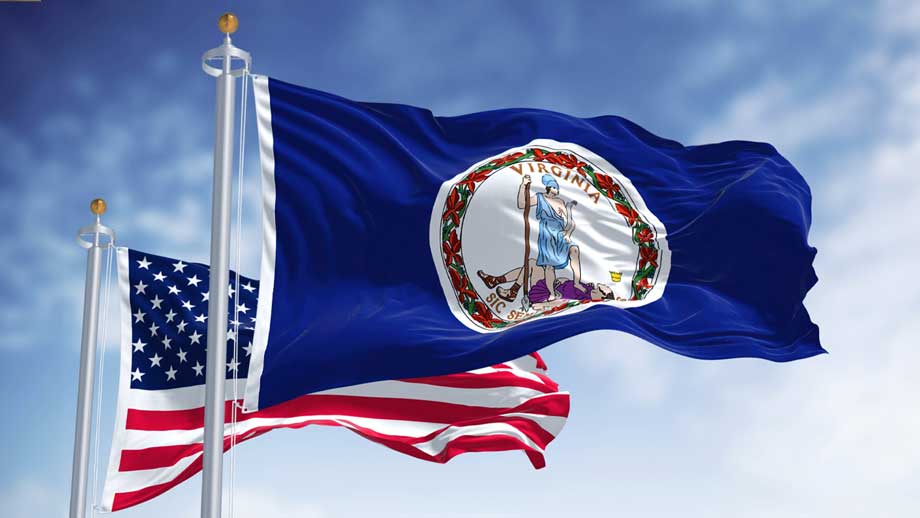Learning Through Preschool Play
by Emily Krisko
Children have an undeniable thirst to learn. If you have ever been driving a car while a child barrages you with “why” questions from the back seat, you have experienced that compelling desire. As a parent and a teacher, it is important to understand how to quench a child’s thirst to learn and to encourage the child to develop a lifelong love of learning. Preschool is an important time for children to develop this love.
Thinking
Preschoolers are very curious about their world. They are trying to understand it and learn more about it. They are beginning to understand people. They are learning about their own feelings and the feelings of the people around them. They are learning how to express their feelings, how to handle them, and why other people’s feelings are important. They are learning self-discipline and to test their world, make decisions, and relate to others in play. Children learn to master these skills―and many more―when they play.
In purposeful play, children are learning to think. They are organizing ideas, talking, solving problems, trying new ways, repeating what works, and challenging themselves. They are making friends by doing things together. Children at play are not waiting to be entertained. They are discovering that they possess the source for finding joy, achievement, and happiness. Children need to have fun and to learn how to create that fun.
Developing Through Play
Their bodies are developing, too. With large- and small-muscle activities, children develop basic physical abilities and fundamental movement patterns that build more refined and mature patterns later. As they develop large-muscle coordination, small-muscle coordination will follow. By going outside to play, children get a sense of freedom. They have a chance to talk, shout, sing, run, laugh, and enjoy the sunshine and fresh air. Body movement contributes to sensory perception, space, imagery, and thought. Developing eye-hand coordination helps develop the skills they need to write.
Small-muscle activities such as cutting, pouring, climbing, and swinging build confidence. They help develop small motor skills for dressing, eating, and washing. This development allows children to do more for themselves. Fine motor materials provide experience in seeing relationships, likenesses, and differences. They lead to classifying, seriating, discriminating, and problem-solving. Human hands are like tools. As children learn to use them to control and make changes, they develop feelings of confidence. Motor activities also help foster descriptive, comparative vocabulary.
Toys and Play
Toys are important learning tools for children to use as they gain mastery of themselves and their environment. While toys are important at every age level, they fill different functions at various ages. Throughout the childhood years, toys stimulate children’s social, physical, personality, and intellectual development. Social development helps children progress from solitary to cooperative play. It helps them learn to play with others. Physical development encourages the development of large and small muscles to include large-muscle control and small-muscle coordination. Personality development encourages maturity of behavior and fosters the uniqueness of each child. Intellectual development expands the child’s knowledge of the physical properties of the world, fosters creative thinking, and increases vocabulary.
Children ages three to five are in the “pre-academic” period. They are developing pre-math and pre-reading skills, exploring dramatic play, increasing language development, refining sensory perception, and continuing large- and small-muscle development. At this stage, parents and teachers should choose toys that encourage the following:
- Visual discrimination of shapes and pictures
- Eye-hand coordination
- Concrete pre-math experiences
- Self-expression in dramatic and creative play
- Sequencing as a pre-math and pre-reading skill
- Recognition of spatial relationships
Choose learning toys such as push-in pegboards, hand and finger puppets, dominoes, matching games, lotto, paper dolls, doll houses and furniture, simple construction and science experiment sets, and simple games that teach colors, shapes, and relationships. Avoid toys that are too heavy for a child’s strength, that are sharp or cutting, or that are poorly made and come apart, break, or splinter.
There are five important checkpoints to keep in mind when buying toys:
- Safe, with no sharp edges, points, or toxic paints
- Durable and of high quality, made to last a long time
- Open-ended and able to be used in many ways
- Span several stages of child’s growth―at least one year
- Suitable to age and stage of child
When preschoolers play they are exploring their world and satisfying their innate desire to learn. By inhabiting a fun, nurturing, and safe environment the preschooler will discover that learning is fun. The appropriate activities and toys will help prepare children for the transition to kindergarten. As a parent and a teacher you can foster a lifelong love of learning. Discover the power of play with your child.
Emily Krisko is an executive director with Discovery Toys. A former teacher, she now holds Discovery Toy workshops in the home to help parents understand the value of play in education. This article first appeared in the Virginia Home Educator Fall 2010.










